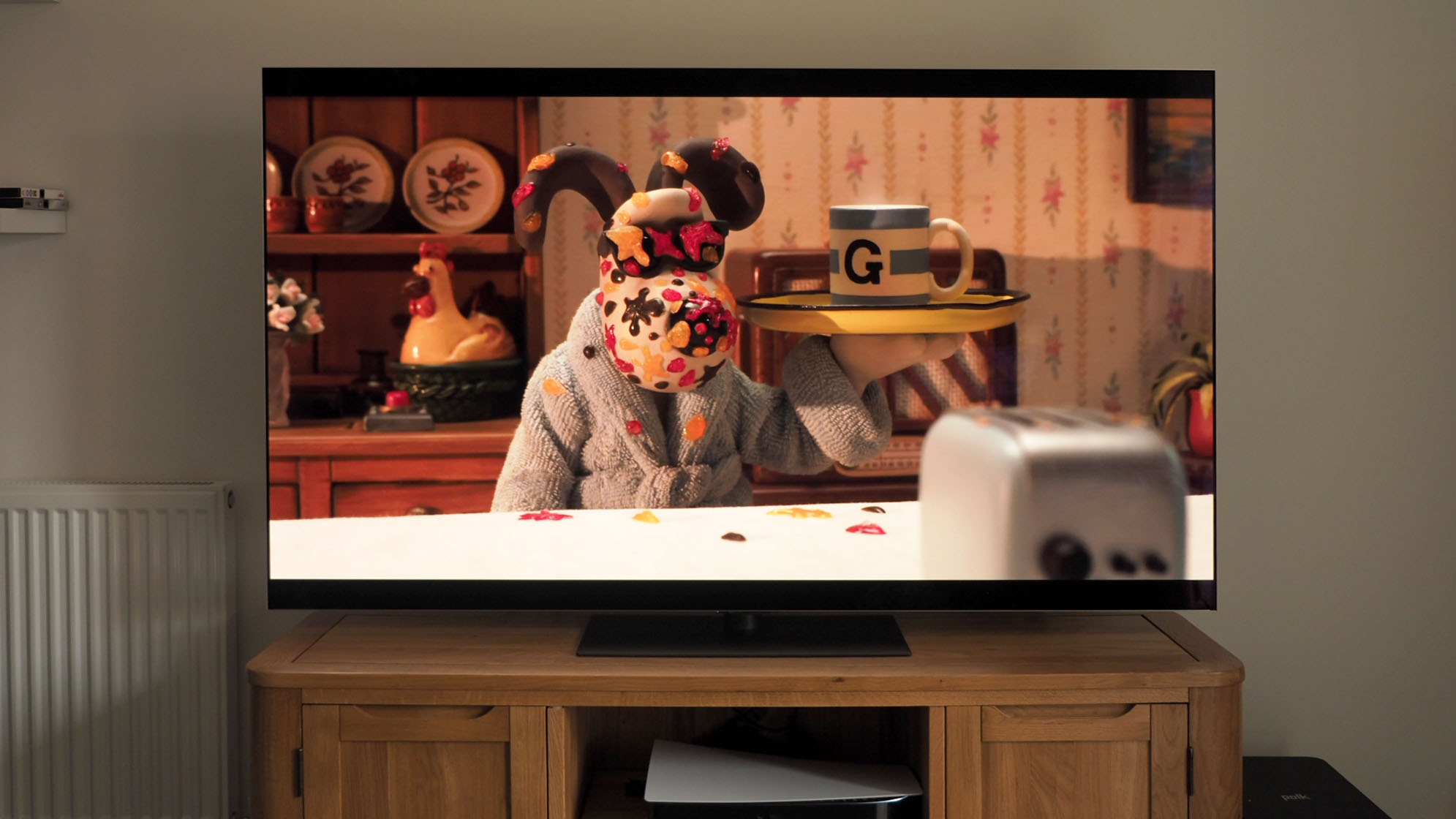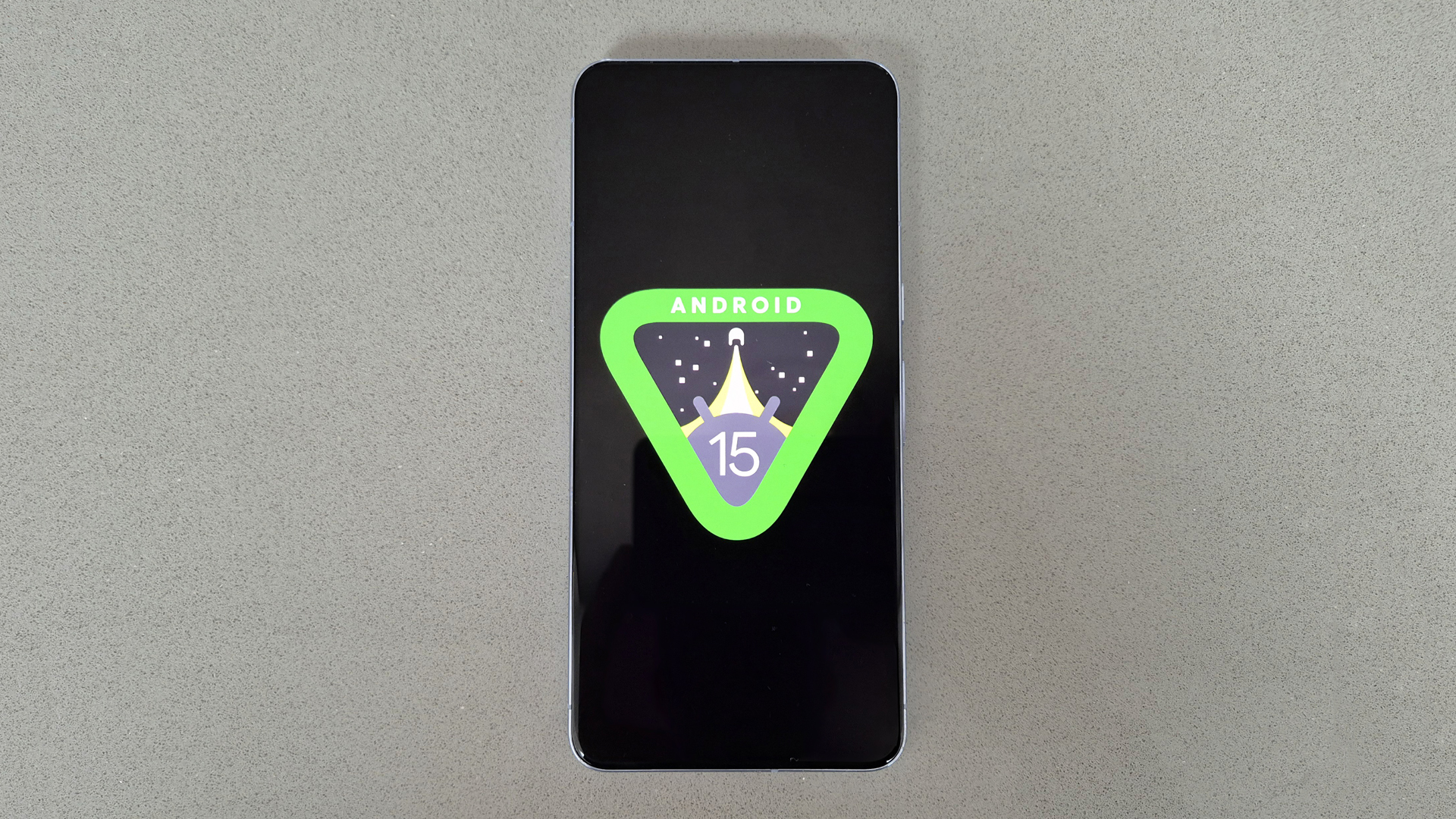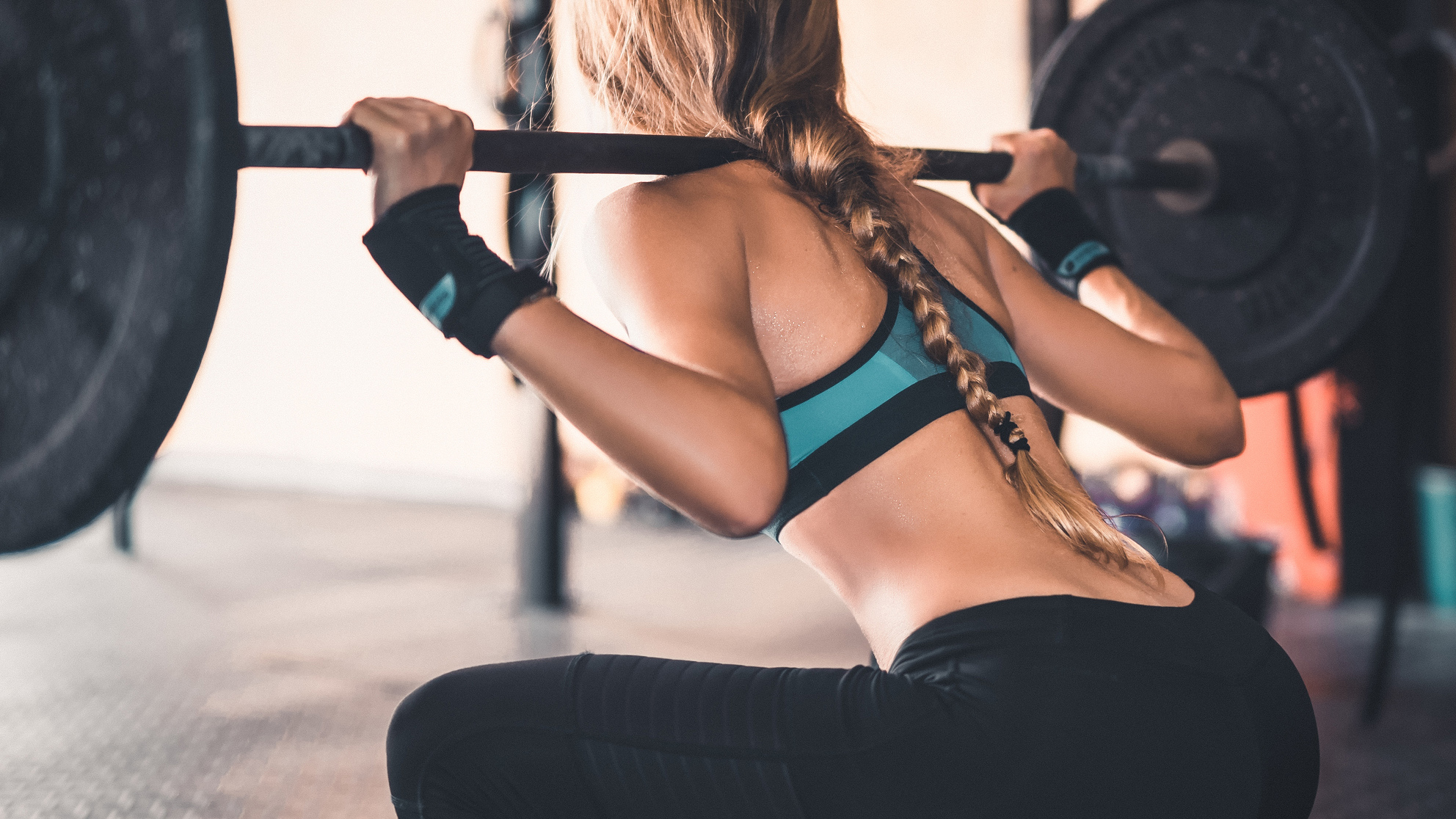

Don't know how to squat? Learn the ways of the glute-force here for quick leg gains and a toned butt. There is no way around it if you wish to get fit. Squats can help you doctor this issue by being the awesome compound exercise it is.
The squat is one of the best glute exercises that really work the biggest muscle in your body, the gluteus Maximus. However, squats also strengthen your quads and hamstrings (front/back of your things), calves, core, lats and the posterior chain.
'Skipping leg day' may be a running joke in fitness circles, but really, there's little that looks more ridiculous than a muscular upper body combined with two toothpicks for legs and a flat bum – unless, of course, you want to resemble a pigeon.
There really is no reason not to love squats, so long as you know how to do them right. If you don't, on your first day at the gym, some smart fella will tell you so. A weighted back squat is such a good exercise that we included it among the Big 5, five compound exercises that can give you a full-body workout – and big gains in no time.
Stay safe!
Needless to say, you have to be extremely careful when working with heavier weights. If you decide to do barbell back squats, you will not only need to be able to re-rack the barbell between sets, your muscles also need to be ready to push that much weight in the first place.
The best way to avoid injury is to get a training buddy who can spot you when you do your squats. Don't attempt heavy squats alone at home without a proper weight rack either.
Once trained, your glutes will be able to push a lot of weight, more than your arms can handle. So, not only you won't be able to load the weight onto your shoulders from the floor, even if you did, getting it off from up there might prove to be extremely difficult.
Sign up to the T3 newsletter for smarter living straight to your inbox
Get all the latest news, reviews, deals and buying guides on gorgeous tech, home and active products from the T3 experts
If you are working out at home by yourself, we recommend doing thrusters or goblet squats instead of barbell back squats.
And always, always warm-up before exercising and make sure you don't push your muscles too much. Rest is equally as important as the exercise itself.
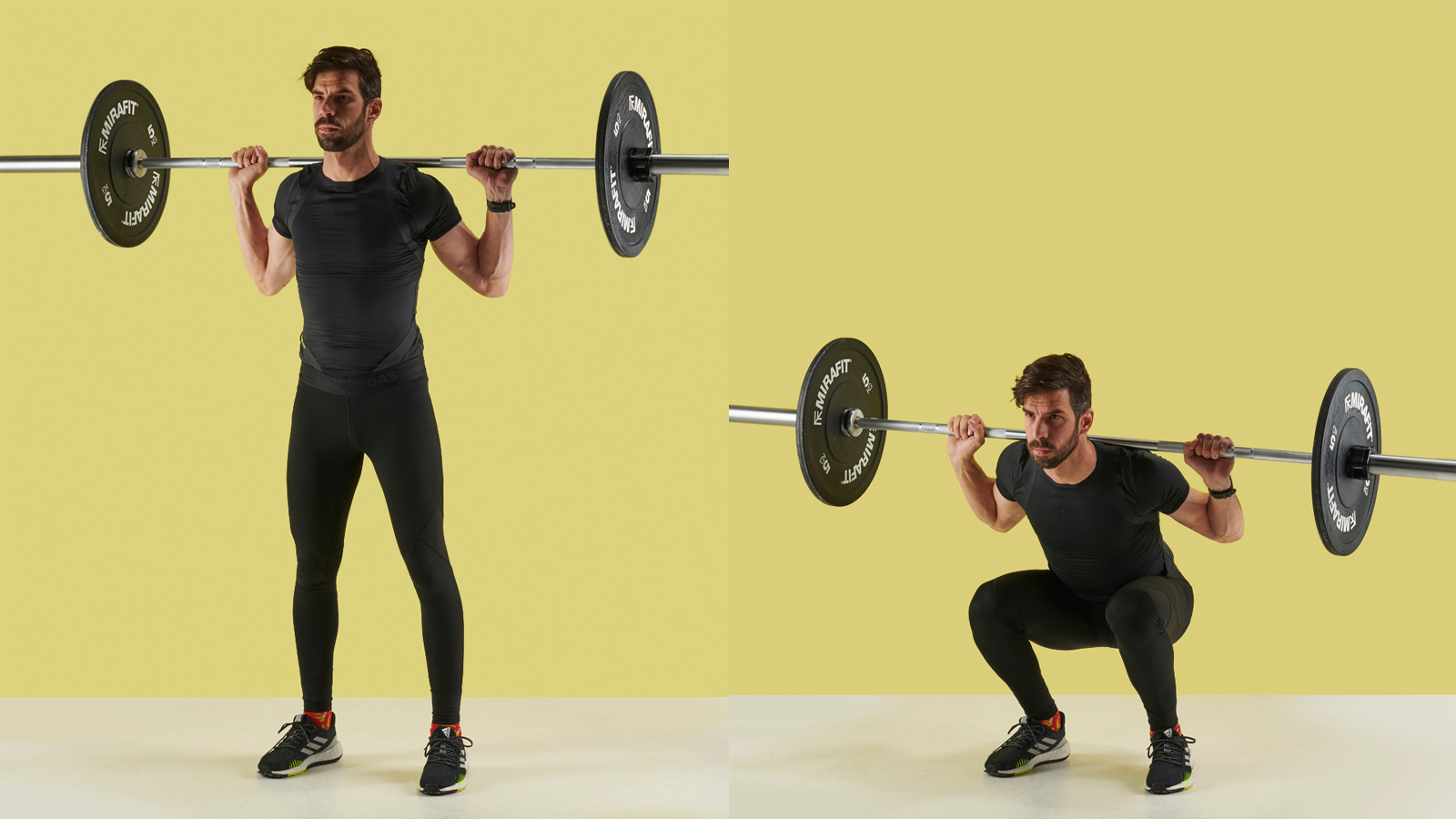
Rest the bar on the traps, not your spine
How to squat right
To perform a barbell back squat, rack the barbell on the squat rack at about shoulder height. Load the barbell by adding one weight plate on each side at a time and fasten them securely on both ends.
Grip the barbell with an overhand grip slightly further than shoulder-width apart and step under it. Without lifting the barbell off, place it on your traps (and not on your vertebrae/spine), then push it up, so the whole weight rests on your shoulders.
Step back one or two small steps (while remaining inside the squat rack), so the bar can move freely as you do the squats. Legs shoulder-width apart, core engaged. Bend the knees and lower the bar. Don't let the knees go beyond your feet. The bar moves up and down in a straight line.
Inhale as you are going down. You would like to go as deep as possible without straining your knees. Concentrate on your glutes and core as you do the squats. If you feel a lot of pressure on your lower back, you probably lean forward too much.
If you are in the gym, it might help to do some squats with only the barbell and watch your form in the mirror. There is no shame in trying to perfect your form.
Best squat variations and alternatives
- Thrusters (this squat works your shoulders too)
- Goblet squat – this variant generally involves holding a kettlebell under your chin while doing a deep squat. You could use a dumbbell instead, at a push
- Front squat (the bar is resting on the top of the chest)
- Bulgarian split squats
- Walking/reverse/side lunges (bodyweight, resistance band, kettlebell)
- Hip thrust (barbell or weight plate)
On recovery and nutrition
To avoid any injuries and to help recovery, stretch after every strength training session (and after every cardio session as well). Foam rollers can be found in most gyms and you can buy them on Amazon too, a quick and inexpensive way to massage tired muscles.
Resistance bands are not only great for workouts (see lunges above) but they are also an effective way to stretch your hamstrings after you did your squats.
You might want to keep an eye out for your protein intake as well. If you are doing strength training, try taking in around 2 grams of protein for each kilogram of body weight per day. So, if you weigh 70 kg, you'll need to eat 140 grams of protein per day. Humans haven't got protein reserves, so you have to continuously take protein in throughout the day.
And make sure you drink plenty of water as well. A decent gym water bottle doesn't cost all that much.
T3's how-to exercise guides
- How to deadlift correctly: a full body workout in one move for stronger arms, back and legs
- Overhead press: how to perform this classic exercise for big arms and quick shoulder gains
- How to do barbell rows the right way: why bent over rows are great to build big back and strong arms
- How to do thrusters: this squat variant is a leg day staple AND a one-move full body exercise
- How to use an ab roller: get a six pack FAST with this cheap home gym staple
- Chin up vs pull up: what's the difference, muscles worked and WHAT IS THE BEST ONE?
- How to do ab crunches for beginners: the best stomach exercises to tone up
- How to bench press effectively and safely: this classic exercise will build a massive chest and big arms and shoulders too
- How to do hardstyle planks: try this plank variation for quicker summer body six-pack gains
- How to do burpees: master this much loved/hated full-body cardio exercise easily
- How to do renegade rows: this upper back exercise also smokes the core, biceps AND shoulders too

Matt Kollat is a journalist and content creator who works for T3.com and its magazine counterpart as an Active Editor. His areas of expertise include wearables, drones, fitness equipment, nutrition and outdoor gear. He joined T3 in 2019. His byline appears in several publications, including Techradar and Fit&Well, and more. Matt also collaborated with other content creators (e.g. Garage Gym Reviews) and judged many awards, such as the European Specialist Sports Nutrition Alliance's ESSNawards. When he isn't working out, running or cycling, you'll find him roaming the countryside and trying out new podcasting and content creation equipment.
-
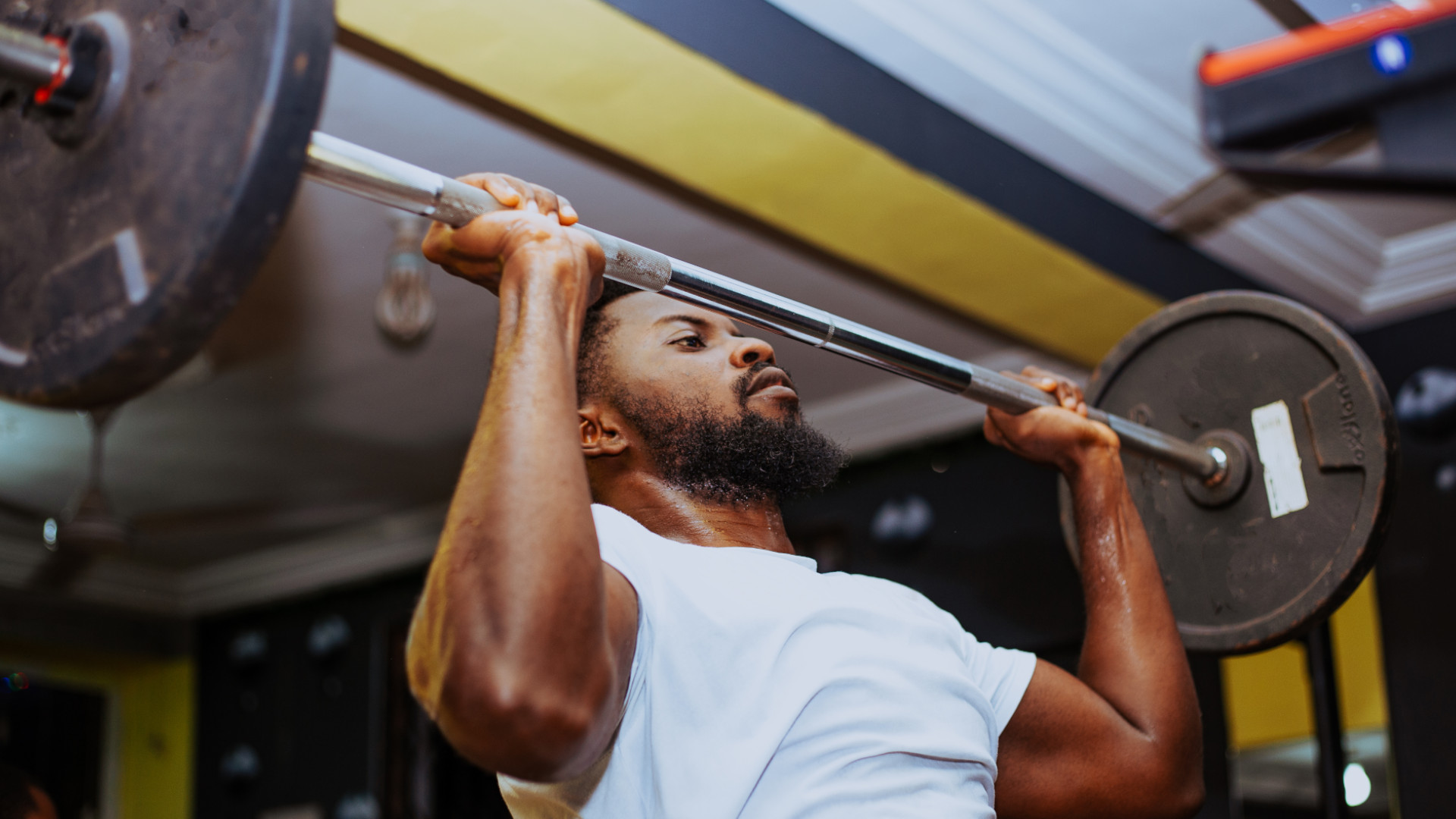 The 5 most efficient exercises for adding strength and size
The 5 most efficient exercises for adding strength and sizeExercise Scientist Dr. Mike Israetel says these are the lifts you should prioritise if you want to get jacked and strong
By Bryony Firth-Bernard
-
 3 overrated shoulder exercises, according to a fitness expert (and what to do instead)
3 overrated shoulder exercises, according to a fitness expert (and what to do instead)Sculpt 3D shoulders whilst minimising injury with these three alternative exercises
By Bryony Firth-Bernard
-
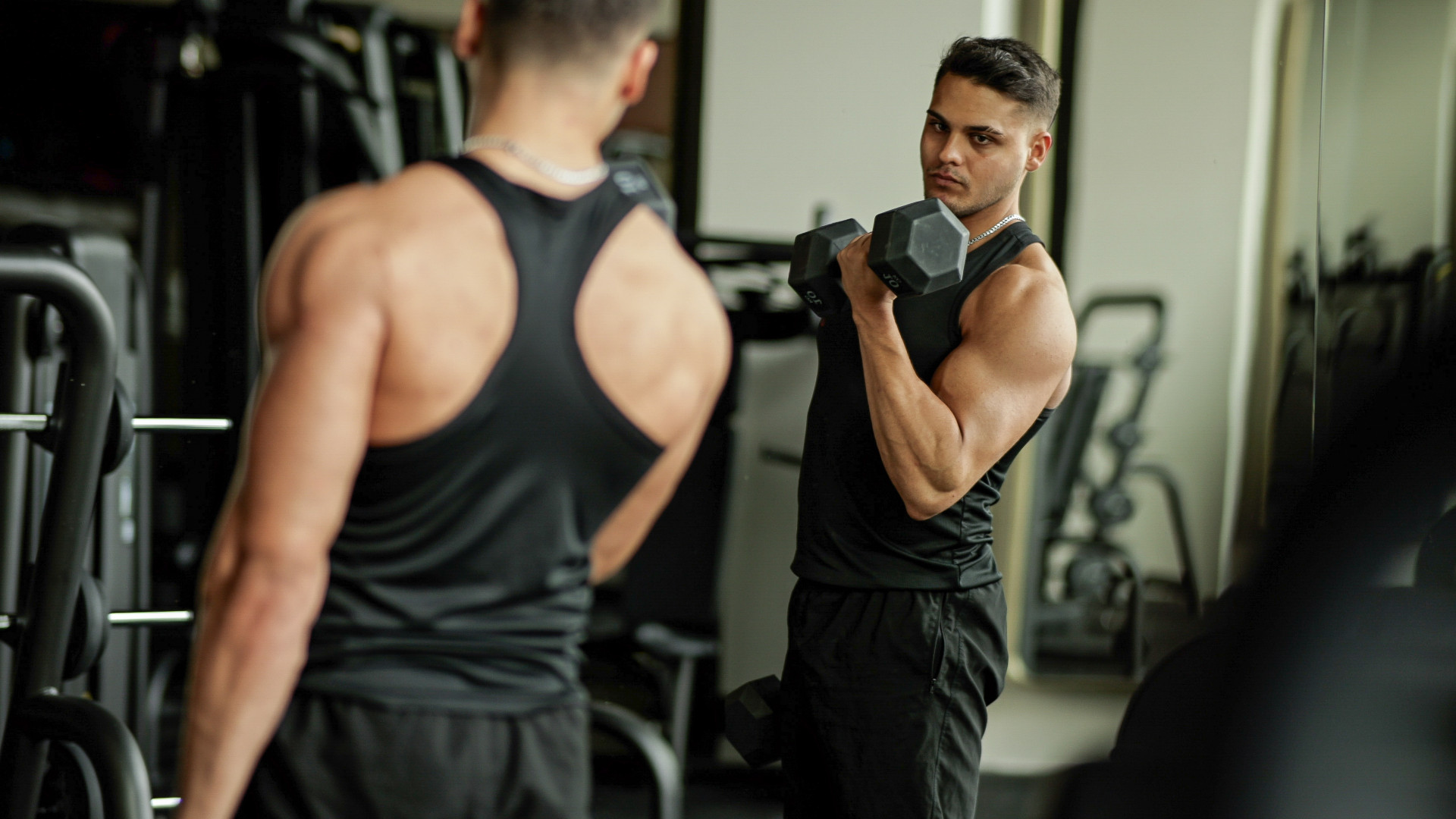 The best biceps exercise, according to science
The best biceps exercise, according to scienceHave you been training your biceps wrong this whole time?
By Lucy Miller
-
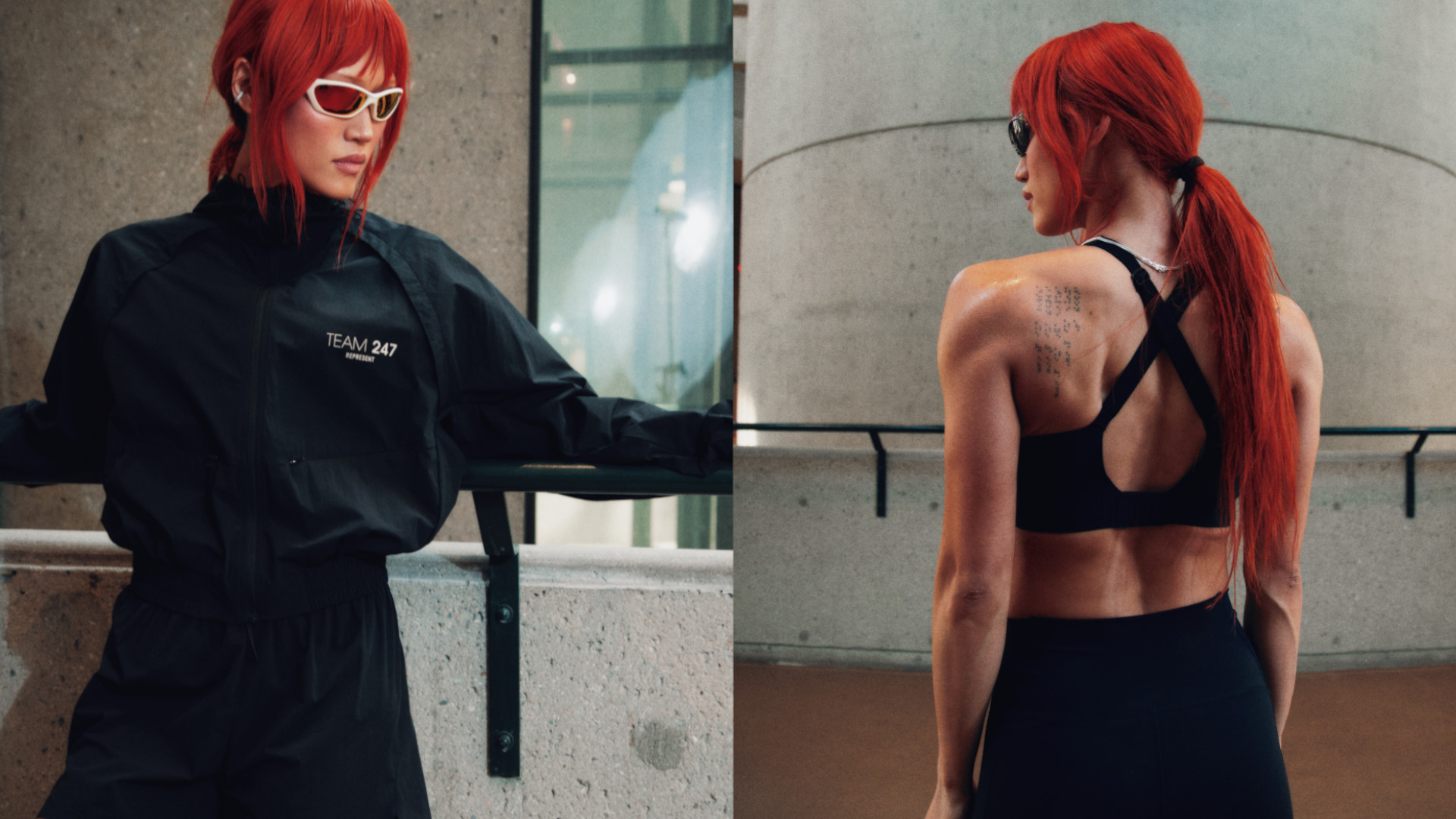 Finally! Represent 247 launches its first womenswear collection, taking you from street to gym in style
Finally! Represent 247 launches its first womenswear collection, taking you from street to gym in styleIt's about time guys
By Bryony Firth-Bernard
-
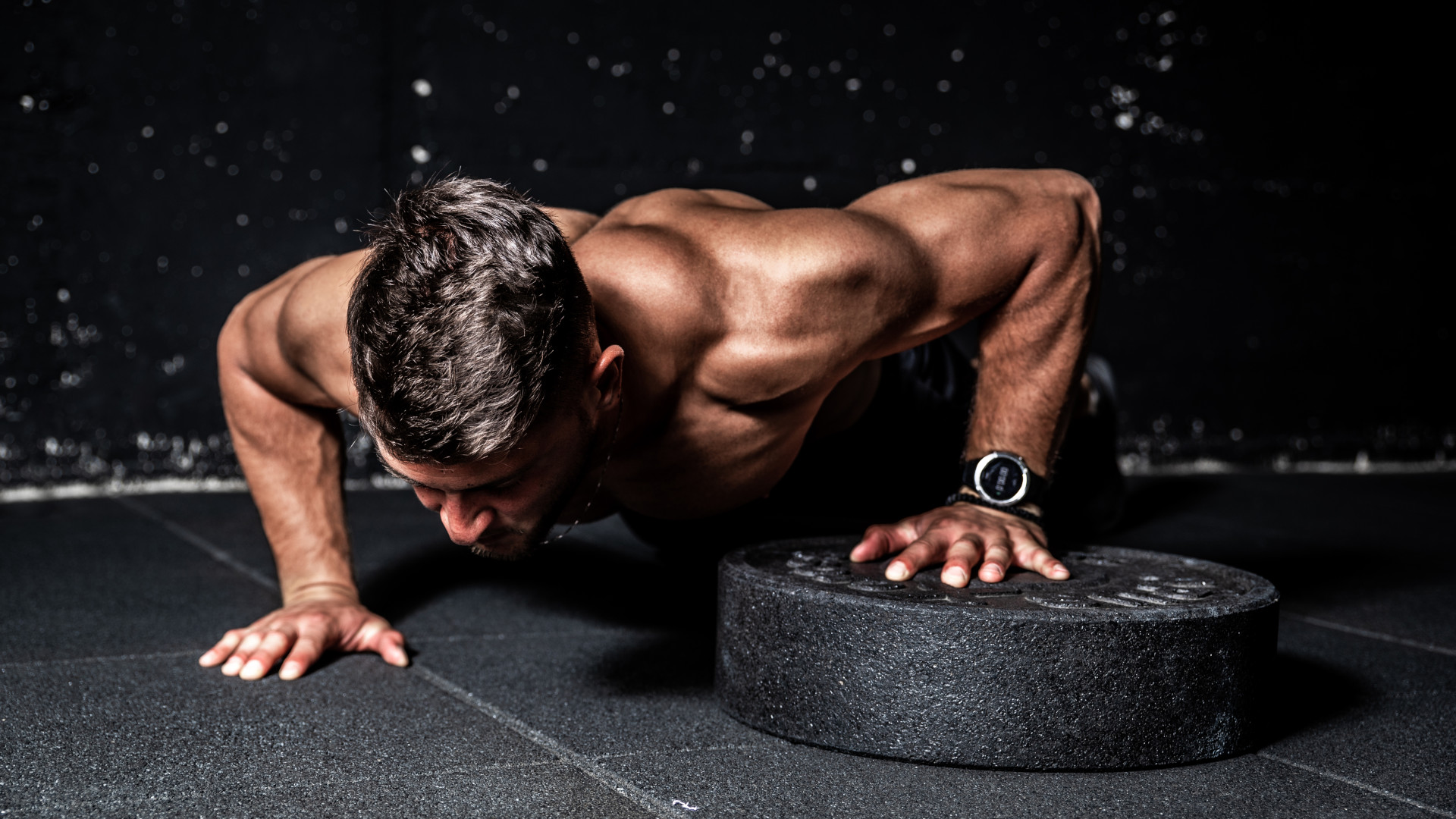 3 chest exercises you’re probably not doing to supersize your pecs
3 chest exercises you’re probably not doing to supersize your pecsA killer pec pump awaits
By Bryony Firth-Bernard
-
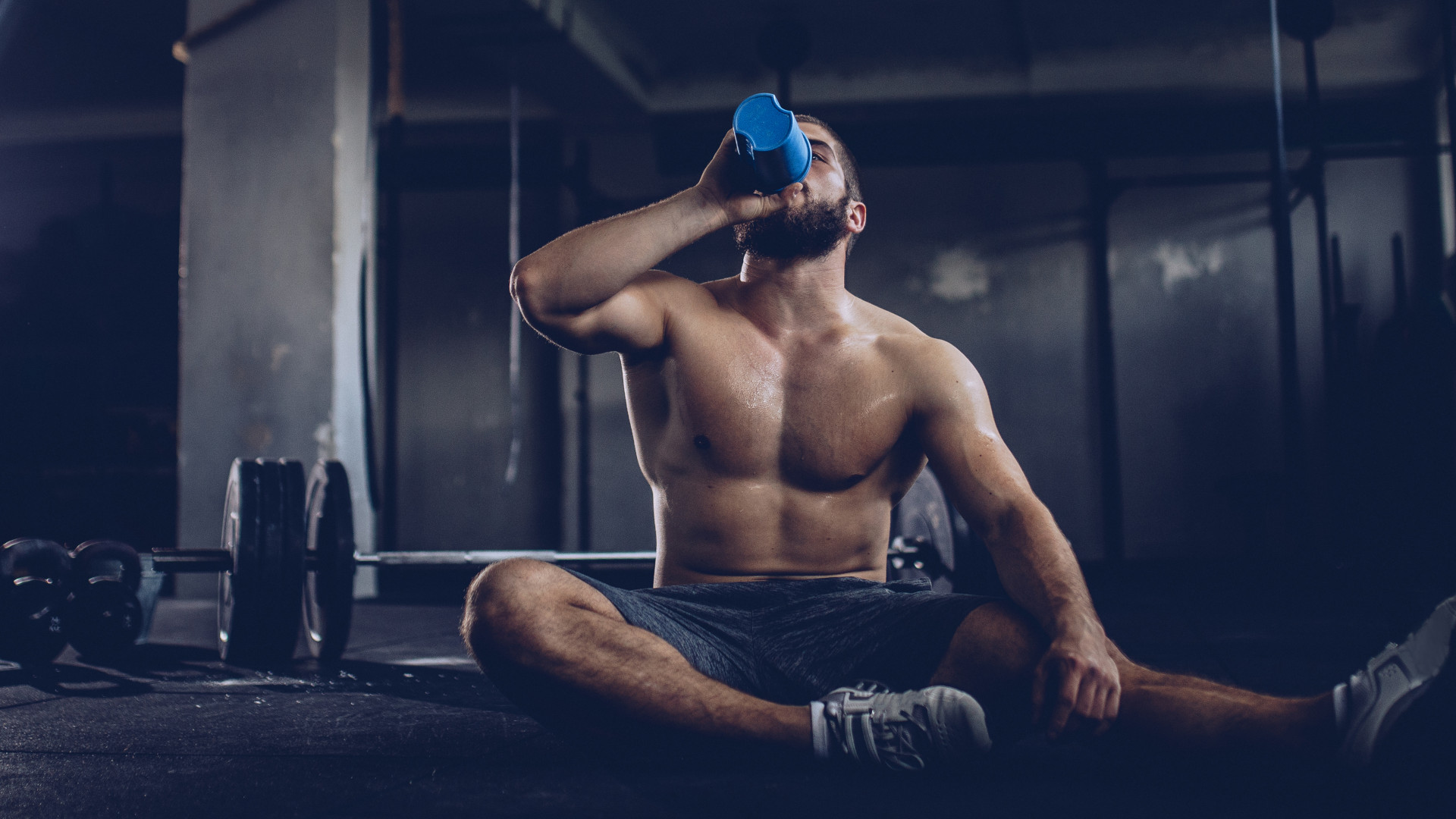 When’s the best time to take creatine?
When’s the best time to take creatine?The science-backed supplement is a must for building strength and muscle, but is there an optimal time to take it?
By Bryony Firth-Bernard
-
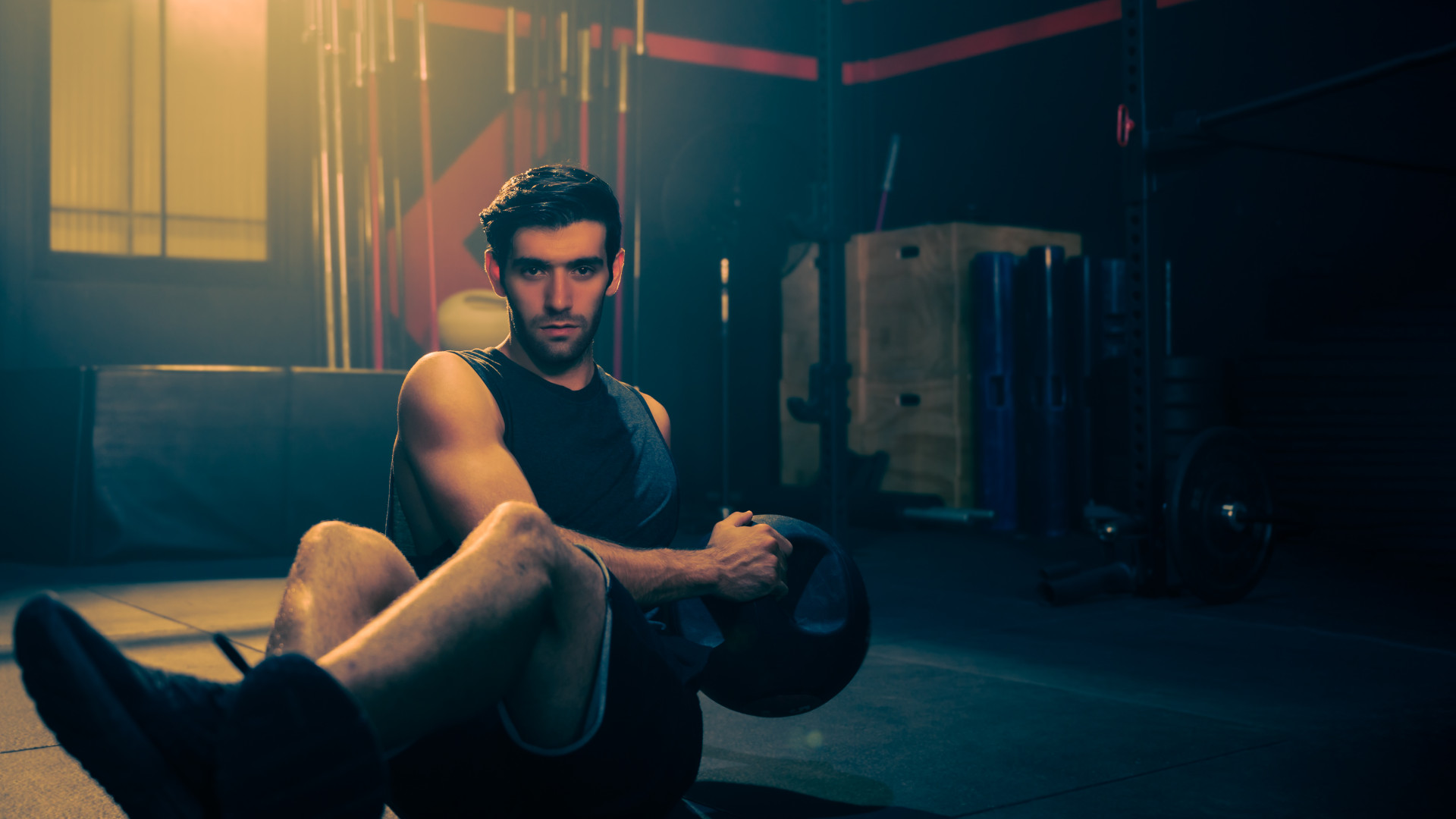 Three overrated core exercises and what you should do instead
Three overrated core exercises and what you should do insteadA fitness expert says these exercises aren’t all they’re cracked up to be
By Bryony Firth-Bernard
-
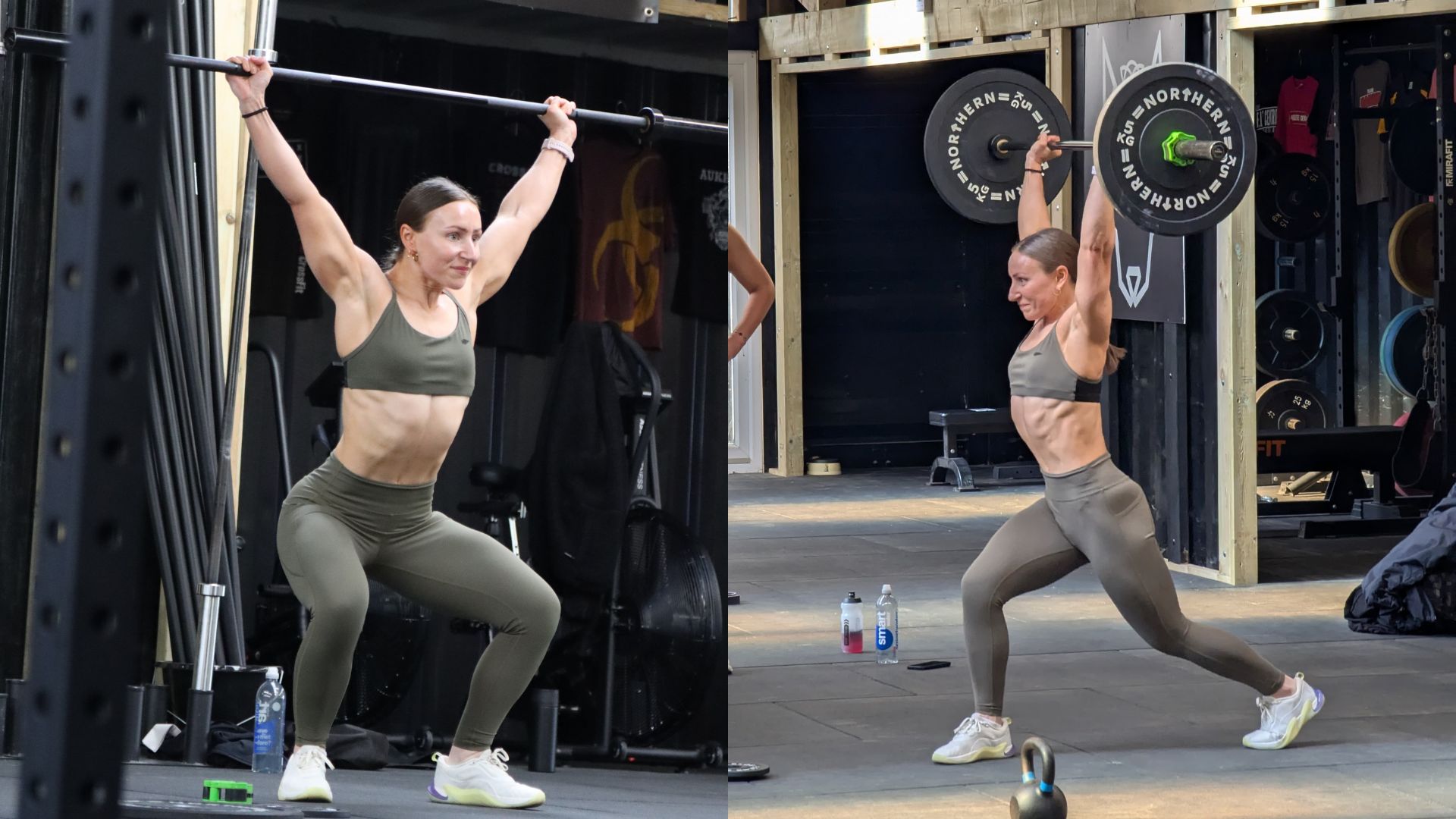 I tried Olympic weightlifting for the first time – here are three things it's taught me
I tried Olympic weightlifting for the first time – here are three things it's taught meBeing strong simply won't cut it
By Bryony Firth-Bernard
